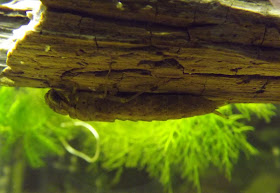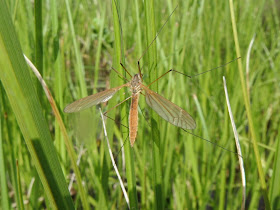Small
hand held saw – this is used to cut the sapling and trim it to length. I carry
a small folding saw with a 4” blade that fits conveniently in a pocket but any
saw will do.
4
lengths of electrical conduit 1/2” x 10’, 2 lengths of electrical conduit 3/4”
x 10’, and 20 hose clamps (big enough to go around all 4 lengths of conduit and
the cut blank) – these are used to hold the blank straight while drying, and
while heat treating the blank. Other types of metal tubing could also work but electrical
conduit is the least expensive that I have found.
Heavy
duty fixed blade hunting knife – this is used to trim and shave down any small
branches and knots, and shave off the bark once drying is complete.
80,
100, and 120 grit sand paper (2 sheets of each) – used during initial sanding.
220,
400, and 600 grit emery paper (2 sheets of each) – used during final sanding.
Tape
measure and digital caliper – the tape measure is for making general
measurements (overall rod length and guide placement) and the calipers are used
to check the rod taper as you work (although much of what I do is by feel).
 Fine-tooth
saw – to trim blank to final length; a fine tooth saw is needed to avoid
splintering of the fine tip when the final cut to length is made. A hack saw
will work fine.
Fine-tooth
saw – to trim blank to final length; a fine tooth saw is needed to avoid
splintering of the fine tip when the final cut to length is made. A hack saw
will work fine.
Electric
heat gun – this is used to heat treat the blank. Most split cane rod builders
make their own heat treating oven using a length of black pipe which they heat
with a propane torch. I find it is too easy to scorch the blank with this
set-up and prefer the more controlled temperature I get from the heat gun.
10’
of 3/4” ID clear PVC tubing – used to hold the rod blank and Varathane mixture
during the pseudo-lamination process.
Roll
of electrical tape – to tape PVC tubing to 2 lengths of electrical conduit.
1L
of clear Varathane (semi-gloss, solvent based) – used to “laminate” the blank,
and for final finishing. I prefer the natural look of the clear semi-gloss but if
you want a darker rod you could try various tinted colors provided they are
solvent based.
Mineral
spirits – to thin out the Varathane.
Mixing
container – to mix the Varathane and mineral spirits (I use an old jam jar).
Small
funnel – to pour the thinned Varathane mix into the PVC tubing.
Clamps
– used to clamp the ends of the PVC tubing shut.
Small
good quality paint brushes – for varnishing the blank and thread windings.
Cork
grip & reel seat kit, rod guides, hook keeper, and rod winding thread – all
of this should be available from your local fly shop. You may need some lead time
if they need to order it. If you wanted to you could buy cork rings and sand
your own custom grip but I prefer the simplicity of pre-fab grip and reel seat
kits.
Small
round chainsaw file – to shape inside of cork grip.
2
part epoxy – for gluing the reel seat and grip to the blank.
Rod
winding jig – used to maintain proper tension when winding guides onto the
blank. I built my own simple jig out of some scrap lumber but commercial models
are available.
 |
Home made rod winding jig; the eye can be moved to either side as required.
Functional but not as adjustable as some of the commercially available models. |

















.jpg)






















.jpg)
.jpg)

.jpg)
.jpg)
.jpg)

.jpg)
.jpg)

.jpg)

.jpg)
.jpg)
.jpg)